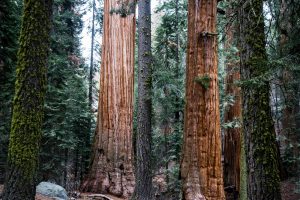Timber cabins are a popular choice for both rustic retreats and modern homes, offering a warm, natural aesthetic and excellent insulation properties. The type of timber used in cabin construction significantly impacts durability, appearance, and environmental sustainability. Here, we introduce ten different types of timber commonly used in timber cabins, showcasing their unique features and benefits.
1. Pine
Pine is one of the most commonly used timbers in cabin construction. It is lightweight, easy to work with, and relatively affordable. Its natural knots and light color give timber cabins a classic look. Moreover, pine has good thermal insulation properties, making it an excellent choice for energy-efficient timber cabins.
2. Cedar
Cedar is highly valued for its natural resistance to decay and insects. Its aromatic qualities and beautiful grain make it a favorite for exterior siding and decking. Cedar timber cabins provide a cozy atmosphere and are ideal for those seeking a natural, rustic charm.
3. Spruce
Spruce is known for its strength-to-weight ratio, making it a great choice for structural components in timber cabins. It is often used in framing and as roof trusses. Spruce timber cabins offer a light, airy feel and are easy to finish with stains or paints.
4. Fir
Fir is a durable wood that can withstand heavy loads, making it suitable for timber cabins that require strong structural support. It has a beautiful straight grain and is often used for beams and posts in cabin construction. Fir timber cabins are known for their longevity and resilience.
5. Larch
Larch is a durable softwood known for its high resin content, which makes it naturally resistant to water and decay. This makes larch an excellent choice for timber cabins in wet environments. Its warm color and unique grain patterns add character to any timber cabin.
6. Redwood
Redwood is prized for its beauty and durability. Its natural oils repel insects and decay, making it an ideal choice for outdoor applications. Timber cabins made from redwood are not only stunning but also long-lasting, requiring minimal maintenance over time.
7. Hemlock
Hemlock is a versatile timber that is easy to work with and has good strength properties. It is often used for structural framing in timber cabins. Its fine grain and light color make it an attractive option for both interior and exterior applications in timber cabins.
8. Cypress
Cypress is a highly durable timber known for its resistance to moisture and insects. It has a distinct, attractive grain that can enhance the appearance of timber cabins. Cypress timber cabins are well-suited for humid climates and can maintain their beauty with minimal upkeep.
9. Oak
Oak is a hardwood that provides exceptional strength and durability. It has a rich color and distinctive grain patterns, making it a beautiful choice for high-end timber cabins. While oak is heavier than many softwoods, its longevity makes it a valuable option for timber cabins that aim for a luxurious feel.
10. Poplar
Poplar is a fast-growing hardwood that is relatively inexpensive and easy to work with. It is often used for interior applications in timber cabins, such as cabinetry and trim. Poplar timber cabins can be painted or stained to match any aesthetic, making it a versatile choice for interior design.
Conclusion
Choosing the right type of timber for your cabin construction is crucial for achieving the desired aesthetic and ensuring long-lasting durability. Each type of timber mentioned above brings its unique qualities to timber cabins, from the rustic charm of cedar to the strength of oak. By understanding these options, you can select the best timber to create your perfect timber cabin, tailored to your preferences and environmental needs.
With Kanopya-Living, we consult the most suitable for your need. Contact us now!




